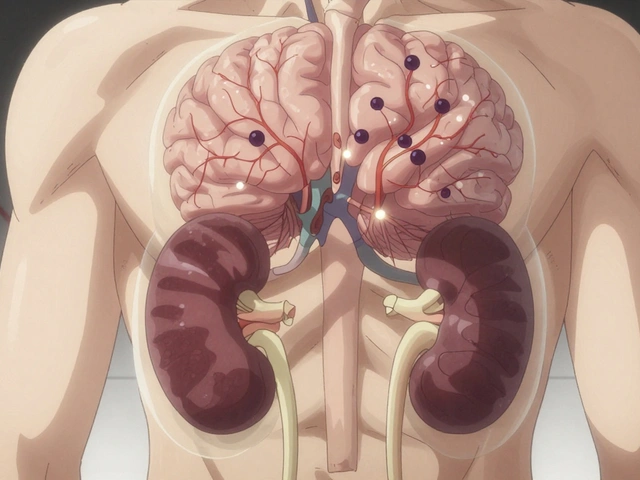Hydrochlorothiazide: What It Is and Why It Matters
When working with hydrochlorothiazide, a thiazide‑type diuretic commonly prescribed to lower blood pressure and reduce fluid buildup. Also known as HCTZ, it helps the kidneys eliminate excess salt and water, easing strain on the heart and vessels, you’re instantly dealing with a medication that impacts several body systems. Lasix, the brand name for furosemide, a loop diuretic works in a different part of the kidney, so doctors often choose one over the other based on the condition they’re treating. Meanwhile, diuretic therapy, the broader strategy of using water‑pill drugs to control fluid balance requires careful monitoring of electrolytes, blood pressure, and kidney function. Understanding these connections makes it easier to follow dosage instructions, anticipate side effects, and talk confidently with your healthcare provider.
How Hydrochlorothiazide Fits Into Hypertension Management
Hypertension, a chronic elevation of arterial pressure that raises the risk of heart attack, stroke, and kidney damage is one of the most common reasons doctors prescribe hydrochlorothiazide. The drug reduces blood volume by encouraging the kidneys to shed sodium, which in turn lowers vascular resistance. In clinical practice, many patients start on a low dose and add a second antihypertensive if needed. The real trick is balancing effectiveness with safety; too aggressive a dose can trigger low potassium or raise blood sugar, especially in people with diabetes. That’s why regular lab checks are a part of any solid diuretic plan. If you’re also dealing with edema—from heart failure, liver disease, or certain medications—your doctor might pair hydrochlorothiazide with a loop diuretic like furosemide to hit both the distal tubule and the loop of Henle for a stronger fluid‑removing effect.
Speaking of furosemide, it’s worth noting the key difference between the two drugs: while hydrochlorothiazide targets the distal convoluted tubule, furosemide, the active ingredient in Lasix, acts on the ascending limb of the loop of Henle. This makes furosemide far more potent for rapid fluid removal but also raises the chance of low potassium and dehydration. Doctors often start with hydrochlorothiazide for mild‑to‑moderate hypertension because it’s gentler and better tolerated for long‑term use. When edema becomes severe, especially in congestive heart failure, they may switch or combine it with furosemide. Knowing which part of the kidney each drug hits helps you understand why dosing schedules differ and why your doctor might tweak the regimen over time.
Another practical aspect of diuretic therapy is lifestyle. Sodium intake, fluid consumption, and even caffeine can affect how well hydrochlorothiazide works. Reducing salty snacks, choosing fresh over processed foods, and staying hydrated without overdoing sugary drinks all support the medication’s action. Some patients also notice a modest weight loss, mainly from water loss, which can be encouraging early on. However, if you feel dizzy, experience muscle cramps, or notice dark urine, those could be signs of electrolyte shifts needing prompt attention. In such cases, your doctor might suggest a potassium‑rich diet or prescribe a mild supplement. The goal is to keep the balance: enough fluid removal to protect the heart but not so much that you feel shaky.
When you look at the bigger picture, hydrochlorothiazide isn’t just a pill; it’s a cornerstone of a comprehensive plan that includes diet, exercise, and regular monitoring. The drug’s ability to lower blood pressure and manage mild edema makes it a go‑to choice for millions worldwide. By understanding its role alongside Lasix, furosemide, and overall diuretic therapy, you can stay ahead of potential side effects and make smarter decisions about your health. Below you’ll find articles that dive deeper into related conditions, compare drug options, and share practical tips for getting the most out of your treatment.

Zestoretic vs. Alternatives: Which Blood Pressure Combo Wins?
A detailed comparison of Zestoretic (lisinopril, hydrochlorothiazide) with common hypertension alternatives, covering mechanisms, side effects, costs and a handy decision table.
Continue Reading



